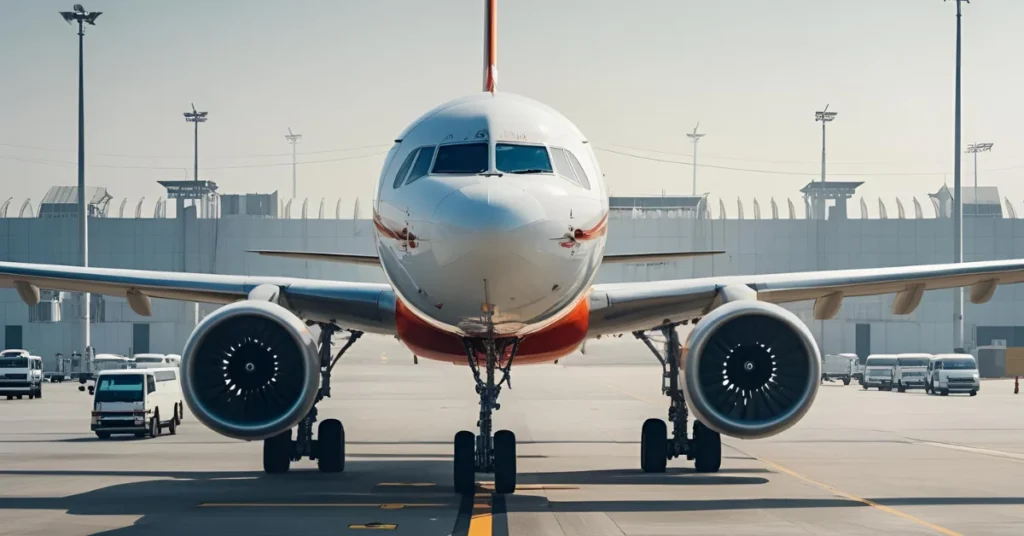In the wake of a recent crash, the DGCA implements stringent new safety norms for Boeing 787 fleets, marking a pivotal shift in aviation safety regulations. Discover what these changes mean for airlines and passengers as safety takes center stage.
New Delhi — Two days after the fatal crash of Air India Flight AI-171, Indian aviation regulators have taken swift action, a rarity in global aviation. The Directorate General of Civil Aviation (DGCA) has issued a comprehensive inspection mandate focusing on Boeing 787 aircraft powered by GE’s GEnx engines.
This directive represents more than just a technical checklist; it signifies a shift in India’s approach to aviation safety, moving towards a proactive, assertive, and globally recognized stance.
What Prompted This?
Air India Flight AI-171, a Boeing 787-8, crashed shortly after takeoff from Ahmedabad on June 12. Out of the 242 passengers on board, 241 lost their lives. Many others also lost their lives when the plane landed in a densely populated area. The aircraft struggled to gain altitude and showed signs of engine trouble just seconds after liftoff.
The following day, a senior official from the Directorate General of Civil Aviation (DGCA) informed reporters, “We are not waiting for a post-mortem. We’re acting immediately to protect lives.”
What the DGCA Ordered: A Checklist Worth Noting
Here’s what’s new: Before any Boeing 787 with GEnx engines departs from an Indian airport, airline engineers must check nine critical systems. This is a continuous inspection requirement.
:
| System | What It Does | Why It Matters |
|---|---|---|
| Fuel System | Monitors pressure, flow, and filter status | Prevents engine flameout or misfueling |
| Cabin Air Compressors | Regulates pressurization | Protects passengers and crew from altitude shock |
| Electronic Engine Controls | Coordinates thrust responses | Ensures no delay or mismatch in engine behavior |
| Actuators & Oil Flow | Powers key movements and cooling | Reduces risk of mechanical jamming |
| Hydraulic Systems | Drives brakes, landing gear, rudders | Essential for basic flight control |
| Flap/Gear Check at Transit | Verifies full extension and retraction | Could’ve helped prevent the AI‑171 mishap |
| Power Assurance Test | Tests engine performance under simulated load | Exposes under-thrust or degraded power |
| Takeoff Data Review | Cross-checks actual vs. expected thrust in past ops | Catches anomalies before they compound |
| Repetitive Snag Resolution | Flag-and-fix recurring system faults | Avoids “papered-over” risks becoming deadly |
All findings must be documented and submitted to the DGCA’s regional offices. Turnaround teams are required to verify all details between each flight.
Why This Matters (Beyond the Checklist)
For too long, airline maintenance in India—and in many areas around the world—has relied on a combination of automation, outsourced vendors, and a hopeful expectation of consistency. This new directive aims to change that.
“We’re reasserting command responsibility,” said a former DGCA inspector. “It’s not enough to say systems are self-checking. Human accountability must return.”
Is the World Watching? Absolutely.
India’s move may nudge others to follow suit.
- Japan’s Civil Aviation Bureau has ordered checks on all 787s, regardless of engine variant.
- The FAA has not mandated changes but is “closely coordinating” with India and Boeing.
- Qantas and Jetstar are monitoring developments but continue flying their Dreamliners.
- British Airways turned around a 787 headed for India after a flap issue—coincidence or caution?
- Air France-KLM CEO Benjamin Smith publicly reaffirmed confidence in the type, but behind the scenes, additional inspections are underway.
Meanwhile, GE Aviation has opened its own review into the GEnx-1B engine model.
A Crash With a Backstory
This isn’t Boeing 787’s first brush with scrutiny:
- In 2013, the entire fleet was grounded over lithium-ion battery fires.
- Between 2020–22, the FAA blocked deliveries over fuselage quality concerns.
- In 2024, whistleblowers accused Boeing’s Charleston plant of “normalizing shortcuts.”
And now—its first fatal crash, 14 years after commercial debut.
Impact on Air India and the Tata Group
Air India, which Tata Sons now owns, has undertaken mass inspections, canceled routes, and engaged in public outreach in response to recent issues. At least three international flights using the Boeing 787 were either delayed or had to return after routine system alerts were triggered.
A Tata official stated, “We have instructed full cooperation with both Indian and U.S. investigators. Every safety protocol must now be reviewed.”
DGCA Safety Norms for Boeing 787: What Happens Next?

- The preliminary crash report is due by mid-July.
- Flight data and cockpit voice recorders are already under analysis by a joint DGCA–NTSB–GE team.
- A broader policy review of long-haul operations is expected from India’s civil aviation ministry.
Should investigators find deeper flaws in the GEnx engine or Air India’s own maintenance practices, a partial grounding is not off the table.
New Safety norms for Boeing 787: FAQs
1. Is this the first Boeing 787 crash?
Yes, it’s the first fatal crash involving a Dreamliner since its launch in 2011.
2. Why focus on the GEnx engine?
It’s the common link to the aircraft that crashed. DGCA is ruling out risk in the propulsion system.
3. Will this disrupt international travel?
Possibly. Flights are being delayed for inspections, especially long-haul routes like Delhi–London or Mumbai–Toronto.
4. Can India ground all 787s?
It could. As the aircraft was registered in India and crashed domestically, the DGCA has full authority.
5. Are other countries issuing similar orders?
Not yet, but Japan has initiated checks, and regulators in the U.S., UK, and UAE are observing closely.
Final Thought: This Isn’t Just About a Plane
When regulators take such swift and decisive action, it indicates a significant cultural shift. India is not only establishing itself as a rapidly growing aviation market but also as a global leader in safety.
The world is observing this transformation, and for once, that’s a positive development.

